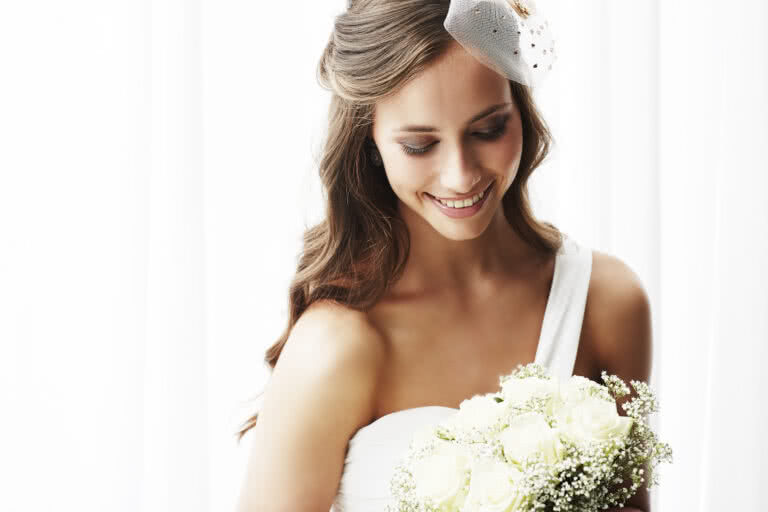Your wedding is a once-in-a-lifetime experience, and the seating chart can make all the difference. A good seating chart will also save you the anxiety of personality mismatches and the risk of reigniting old family feuds (yes, you know what we’re talking about!).
You can delight your guests and create a more special and memorable day for everyone with a well-thought-out seating arrangement. By spending a little extra time in the planning stages, you can help your guests make new friends and reconnect with old ones.
That’s how Eventbrite can help, whether you’re planning a large wedding or an intimate gathering. As event planning experts, we can walk you through everything you need to know to make your wedding’s seating chart.
Here’s a handy little guide to help you make your special day a perfect one.
Do you need a wedding seating chart?
Remember: It’s your wedding. At the end of the day, you don’t need to have a seating chart if you don’t want to! But most people find seating charts helpful, which is why they’ve become a standard.
One reason why people like to use a seating chart for their wedding and/or evening reception is that it helps the event move along faster. A good seating chart ensures everyone finds their places quickly, and it avoids the messy chaos of guests looking around for their friends and pulling over extra chairs at already-full tables.
Seating charts are also a good idea because your wedding guests will be with people they already know and like, and maybe a few new faces. Sitting people at a table full of strangers can be a little overwhelming.
You’ll also make sure you separate people from others they don’t get along with. You can even have a kid’s table so your smaller guests can let their hair down and have more fun (not to mention the welcome break for the parents!).
Ultimately, it is up to you whether you want to have a seating chart and what it looks like. Your culture and religion may even dictate some of this. There just isn’t a one-size-fits-all strategy for this one. These kinds of decisions are so complicated that 15–20% of couples hire a professional to plan their wedding for them.
If you’re looking for a more non-traditional wedding, not including a seating chart could help create that atmosphere.

Should you use a seating chart or place cards?
While seating charts are more traditional, many people choose to use place cards for their wedding dinners instead. Each has its pros and cons, but in general, seating charts are easier to create and understand, but place cards allow more room for personalisation.
Seating charts
Using a seating chart will give you a single document that you can adjust on the fly. It’s easier to rearrange, gives structure and organisation to your seating, and is easy to create while accommodating a large number of guests.
On top of all that, seating charts are great for the guests themselves. They can see the chart you post at the door of the reception venue and use it to go straight to their seats. Seating charts are easy to use and understand. However, you should consider that guests could have trouble finding their seats if they forget where they were on the chart, so you might want to consider including place cards, too.
Place cards
Place cards offer a more personal touch than seating charts. You can get creative with them to include fun personalisation for guests. They can also be meaningful gifts that they can take home for themselves.
Place cards are an effective way to help guests quickly and easily find their seats without any confusion. With each plate clearly marked, it’s simple for everyone to identify and find their seat. You can also use your place cards in any location, which is especially helpful if your venue cancels last minute or you need to make any last-minute changes.
Which to choose?
If you’re organising a wedding with a small guest list, say fewer than 50 people, name cards may be enough to determine everyone’s seat arrangement. However, consider the venue’s layout and the number of ways guests can enter when deciding the best way to designate seats or tables.
Having a seating plan or chart becomes important when the venue is large so people don’t spend too much time looking for their seats. Overall, larger groups will tend to need seating charts, whereas smaller ones can manage with place cards.
However, nothing is stopping you from using both! You can get all the advantages of a seating chart while giving people name cards as a bonus souvenir. Just make sure you can keep track of invitees and have a place for everyone. One couple found that Eventbrite’s RSVP tracking tool made it especially valuable for making sure they knew who was coming and what their food preferences would be.

Wedding seating charts: Choosing table shapes and arrangements
The shape of your tables and how you arrange them is an under-appreciated aspect of how you set up your wedding. With this guide, you should be able to choose the table shape and arrangement that’s best for you.

Round tables
Round tables are the most versatile option when it comes to seating arrangements. They provide flexibility in terms of size and can accommodate a variety of guests, from small groups to large gatherings.
These tables also allow for more social interaction between guests, as everyone can easily see one another. This allows for easy conversation with more than one person.
However, round tables usually need to be arranged in a scattered pattern. That arrangement can make it difficult for people to find their seats and can also create narrow spaces between the tables that make it harder for people to move around.
Square tables
Square tables are a great choice for weddings that require more formal seating and an intimate atmosphere. That’s because they’re usually smaller, seating up to eight guests.
Smaller square tables make it easier to talk to close friends without having to shout over a large group. You can also move them into different arrangements very easily. Maybe during the dinner, you want the tables spread out across the room, but you want to move them into a U-shape during the dance, for example. The intimacy and versatility provided by square tables are their main strengths.
Serpentine tables
Serpentine tables are a great solution for larger weddings. These tables create a zig-zag shape, allowing guests to be seated in groups and see one another easily without having to shout over the entire table.
That encourages more conversation between guests. The serpentine shape also provides an interesting visual that can add to your wedding’s atmosphere.
Family style tables
Family-style tables are a great option for larger weddings with an informal atmosphere. These rectangular tables typically seat up to 10 people and are arranged in long rows or circles.
This type of table arrangement allows guests to share food and conversation easily, creating a more intimate setting. They can also make things easier if you’re catering the wedding yourself or if your caterers have a limited staff.
Banquet tables
These are long rectangular or oval-shaped tables that are perfect for buffets and large meals. The number of guests they can accommodate is flexible because banquet tables can be as long as you want.
That makes banquet tables a great option for larger events. The arrangement of these tables makes it easy for servers to pass meals quickly and efficiently to guests.
U-shaped seating arrangement
The U shape is ideal for big weddings with lots of guests, where you still want to leave room for an open central area. If you need a dance floor in the same room as your dinner, the U shape is perfect for what you need. Plus, it creates a natural head table where you can seat the wedding party.
How to pick your table shapes and arrangement
All in all, picking the shapes of your tables and how you arrange them is an important decision you’ll have to consider carefully. Remember that it’ll affect everything, from how people socialise to the speed of the food service, so keep those in mind when you’re making your choice.
You should definitely consider the number of people you can seat at the venue with the different arrangements. This can be quite different. Also, consider whether the arrangements allow you to seat the groups of people you want together.
For example, if you have 12 former coworkers or college friends you want to all sit together, an arrangement of smaller, square tables might not work as well as banquet or family-style tables.
Finally, don’t forget about the spaces between the tables and whether they will interfere with the flow of staff and guests moving around them.
Top wedding seating chart tools, reviewed by event experts
There are many different wedding table seating chart tools out there, so Eventbrite’s experts are here to help you cut through the options that may not work for you and find the tool that fits your needs perfectly.
All of the tools below are free to use, a relief for couples looking at paying an average of £20,000 for their weddings.

Eventbrite Reserved Seating
Eventbrite has a seating chart tool that’s so well-designed that it won an award for disrupting the field of seating management tools. On top of that, it integrates with Eventbrite’s invitation and attendee management tools, making it especially powerful. You can even map the floor plan of your wedding venue with it.
Includes:
Eventbrite’s tool boasts an intuitive UI (User Interface), and it’s one of the most customisable options. You can change the exact size of your tables to match the ones you’re working with in real life, and you can even customise the shape of the space to match your venue, which is especially helpful if you have a unique venue.
Eventbrite also comes with the best integrations with other tools since you can send invitations from the same tool as the highly customisable with both customisable tables and a variety of other objects like stages and bathrooms you can plan as well, strong user support, integrations with other event tools.
Doesn’t include:
There isn’t a 3D mode in Eventbrite’s tool, and it also lacks some of the more unusual table shapes you might have at the wedding.
Why we like it:
We would recommend this tool because of its flexibility and powerful integrations.
Wedding Wire
Wedding wire is one of the most popular seating chart options out there, and that makes sense. The tool is intuitive and easy to use, even if it doesn’t have all the options that other tools do.
Includes:
Wedding Wire’s seating chart tool is flexible and easy to use, with a good number of table options. You can customise the tables’ sizes, and the same site has other great tools like a registry maker and a wedding website designer.
Doesn’t include:
This tool lacks serpentine tables and other less common table types. You’ll need to create an account with Wedding Wire before you can use the tool, and it doesn’t provide exact measurements so you can’t plan how the tables will fit in your venue. It also doesn’t have a 3D mode to help you envision how the tables will look within the space.
Why we like it:
If you want a one-stop place with easy-to-use wedding tools, this is one of the better options.
Prismm
Prismm (previously Allseated) is a professional-level software that is robust enough to give you a wide variety of options, but that professional-grade technology also requires professional-level knowledge.
Includes:
Prismm’s professional-grade software has a huge variety of features that make it more robust than the other options. It has a detailed 3D mode that lets you customise table settings and linens to fully envision the venue when it’s arranged. It also has a wide variety of tables you can place and lets you carefully measure the sizes of tables and the spaces between them so you can be sure everyone has enough room to move around. This is the most precise tool available for people looking to know exactly what their venue will look like.
Doesn’t include:
While Prismm lets you measure the tables, it doesn’t give you an easy way to customise their sizes. In general, it lacks a user-friendly design. If you’re already familiar with the software then it’s a great tool, but it might not be worth the effort of learning its intricacies if this is the only time you use it.
Why we like it:
We would recommend this tool because it’s so robust and precise — great for professional wedding planners.
Wedding Mapper
While Wedding Mapper is certainly simple to use, it isn’t particularly nice to look at. Plus, it gives you very few table shapes to work with, so it’ll only suit simpler seating arrangements.
Includes:
Wedding Mapper’s biggest advantage is its usability. You can click on the link above and have a simple, functional seating chart in just a few minutes.
Doesn’t include:
The simplicity that makes Wedding Mapper easy to use is also its biggest weakness. It has the most limited selection of tables, it’s not very pretty to look at, and it can be difficult to put together a large or complicated seating arrangement with the inability to select more than one table and make mass changes at the same time.
Why we like it:
It’s very easy to use — great for a simple do.
Planning.wedding
Planning.wedding has a huge array of options and features, and it’s much easier to use than Prismm. Still, it lacks features like a 3D mode, and its lack of support means you need to figure it all out on your own.
Includes:
Planning.wedding’s tool is fairly intuitive, while retaining a great depth of features. Unlike many of the other options, it makes it easy to customise your tables to the exact shapes and sizes you’re working with, and it also includes a name card maker.
Doesn’t include:
By far the biggest drawback of planning.wedding is its lack of user support. It has no guide for use, no FAQ section on the tool itself, and no forum where people discuss how to use it. It appears that the only way to get support is through the “Contact Us” section of the website. It also has a low variety of table types, meaning that if you’re using more unusual tables, you might want a more robust tool.
Why we like it:
Because you can create tables in whichever shape you like.

Rules of wedding seating etiquette
While every family has its own traditions, most guests will have some expectations about wedding seating. Here are the most important ones to keep in mind.
General guidelines
In general, having couples seated at the same table is considered good wedding seating etiquette. This way, they’ll be surrounded by the people they’re closest to while making new friends at the same table.
Immediate family and friends should also be seated together at the same table. Doing so allows them to enjoy shared conversations, narratives, and memories with one another as they celebrate the couple’s big day.
Families with young children are another consideration, as the children might need help and supervision. Putting several family units at the same table allows parents and children to spend time together while enjoying the party with other guests who are on the same messy, loud boat.
How to seat singles
A singles table is a great option for those attending weddings who don’t have a partner. This setup allows everyone to be seated together at one table and encourages conversation and camaraderie among the group.
However, it can also be an uncomfortable situation for some guests if they feel like they’re being put on the spot or singled out because of their relationship status. To avoid this, make sure there are enough activities and conversations to engage all the single guests so everyone feels included and comfortable.
Another strategy is to place singles on various tables throughout the reception. This way, no one person will feel singled out ,and guests can mingle with others without any pressure. When seating singles at multiple tables, try to mix up ages and interests so that conversation can easily flow from one table to another.
Of course, all of these strategies will depend on cultural expectations, so it’s important to check in with the families and anyone else involved in planning the event.
Other ways to group guests
You can group your guests in plenty of other ways. For example, you can seat them according to common interests. Combine that with a mix of backgrounds and experiences, and your guests will learn something new and have plenty of topics to connect over.
Another approach is to keep age groups in mind when arranging seating for multigenerational families. By seating younger guests together and more senior guests in another group, it’s more likely your attendees will have something in common with each other.
For guests who are looking for a more entertaining way to find their seats, you can make humorous seating cards. These cards can include fun facts about each guest or even suggest topics of conversation for those at the table. This allows everyone to make introductions with ease and quickly break the ice.

Wedding seating chart idea: Setting up a kids’ table
Seating kids at a wedding isn’t always easy. Consider setting up a dedicated kids’ table and paying for a “babysitter” or entertainer if the children are young. This allows the little ones to be comfortable and have plenty of space to move around without disturbing anyone else.
Additionally, it makes sure that they can eat, talk, and play without any worries or restrictions.
Having a separate kids’ table also ensures children don’t interfere with the more formal adult activities like the speeches, allowing their parents to relax and listen. Another great aspect of having a designated kids’ table is that parents have more freedom to enjoy themselves during the reception, knowing that their young ones are being taken care of.
Wedding seating chart sample
Now that you know exactly why and how to use a seating chart, here’s a handy wedding seating chart template you can use on the big day.

Wedding seating chart FAQs
Here are a few common questions about wedding seating charts that Eventbrite’s experts can help you out with!
Should a wedding seating chart be in alphabetical order?
No, for the most part, a wedding seating chart does not need to be alphabetical. However, if you want your guests to find their seats quickly and easily, it may be helpful to arrange them in an order that’s easy for people to understand, such as seating former coworkers all together.
Where do you print a wedding seating chart?
You can print a wedding seating chart at any local printing shop or online service. Make sure to double-check that the size of the paper you use is large enough for guests to easily read the seating chart.
How should you display the seating chart at a wedding?
The most common way to display a seating chart is on an easel or wall. You can also make creative displays such as framed seating charts, hanging signs, or even projections of the seating chart onto walls.
How do I make a seating chart for a wedding?
Start by listing all guests and grouping them by relationships or social circles. Decide on table shapes and arrangements suitable for your venue, considering how they foster interaction and use the space efficiently. Consider using wedding seating chart tools for layout and organisation, and consider wedding etiquette for arranging guests thoughtfully.
Why wedding seating charts matter
Seating charts can help make sure your guests have a great time seeing their old friends and making new ones. How you lay out and communicate your seating will determine who people talk to and whether they can move around and mingle with others easily.
Tools like Eventbrite’s reserved seating chart maker make planning your wedding’s seating chart easy while implementing expert advice on how to make sure your guests have the best time possible. With this easy-to-use tool, you can spend less time worrying about seating and more time getting excited about the big day.






